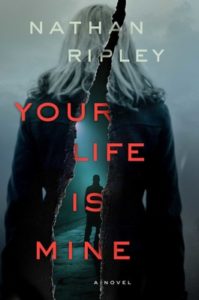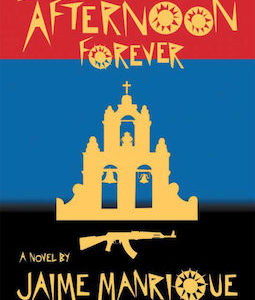The seemingly endless range of spree killings across North America has been an inescapable part of my daily consciousness for the past few years, and I’m sure you would have to say the same, unless you have a talent for the kind of escapism that people who don’t read genre fiction think genre fiction is all about. I found myself dealing with the seeming randomness of these killings by looking for connections between the varying philosophies, from incel rage to religion-distorting extremism, that bound these happenings together. And I found myself disgusted, angered, and most of all, bored by the dull, self-pitying and self-aggrandizing manifestoes that bound these murdering losers together. As much as these men wanted to create legends of themselves and their causes, they emerged, without exception, as forgettable, pitiful, trivial: footnotes to their own defining action, the pointless termination of multiple meaningful lives. It’s tough to write a novel around a villain when your thoughts about this type of man are “Fuck this loser.”
Because a good psychological thriller can never be straightforward. The plot may be, but even then—if the writer is open to how truly complicated a person, and therefore a character, can be—the story is often pushed off the rails of logic, and a new continuity, ruled by the unpredictability of perverse, needing, desperate, obsessive humans, is established. This acceptance of human complexity and the ability to lock into and illustrate its illogic defines the psychological thriller writing that I most admire, from Patricia Highsmith right through Megan Abbott. This is the literature of our greys, of the in-between places, where the notion of a Morally Perfect Hero is as absurd on the page as it is in reality. This is where I spend the thinking time and reading time that generates the albumen glop which eventually becomes the idea for a novel. But while building a flawed, complex hero feels natural to me, drawing on the worst and best I see in myself and the people around me, finding ambiguity and multiple facets in a type of villain that I have pure disdain for can feel impossible.
But I did find myself wanting to write about what I’d been thinking about. And I eventually found a way in to writing about this type of man, a villain (or two) who would be set against my protagonist, Blanche Potter. Blanche emerges from a childhood saturated in the legacy of her spree-killing father into an adulthood that she insists on defining for herself, despite the clawing grab of the past. Blanche’s mother, still immured in the violent world created by her murdering husband, is herself shot, making it impossible for Blanche to doubt that there is someone determined to extend her father’s legacy of violence.
I decided on an approach to my villains after reading Jeff Guinn’s recent true crime opus The Road to Jonestown. I had no desire to lend Jim Jones accidental glory by basing any character on this cult-leader and mass-killer of his followers, so I didn’t. But Guinn’s book pointed to the elements that Jones shared with the kind of self-obsessed shooters I was trying to write about without making myself sick.
There is plenty of interesting material in the Jones story beyond its horrible climax, when 909 members of his Peoples Temple died after taking poison. For example, Jones played a major role in integrating restaurants and churches in 1960s Indianapolis, and was a prominent anti-racist voice. I suppose that suggests depth, of a sort, but if you look closer, as Guinn’s book allows us to do, Jones flattens right out: the man whose commitment to a cause and his own righteousness led him to perform just actions is the same megalomaniac monster who ordered death on a mass scale to those who’d made the terrible error of putting their trust in him.
Robert Caro, Lyndon Johnson’s great biographer, believes in a variation on Acton’s “power corrupts”: Caro’s take is that power reveals. And that holds true for Jim Jones: the kind of man he was never changed, it just became more evident as his power over those around and beneath him accrued.
No one is too stupid to be a genuine avatar of evil. And no one is too smart to avoid being a victim of it.The Jones story also reminded me that complexity is indeed a natural part of any story of villainy or idiocy: that this transparent, self-righteous huckster with awesome charisma and ideas borrowed from magazine articles about the apocalypse may have been a moron, a man who should justly be forgotten, but the story around him and the effects he had are—complex. Far too complex for a person who was so single-mindedly selfish, whose ideas at base were ultimately so unconvincing. No one is too stupid to be a genuine avatar of evil. And no one is too smart to avoid being a victim of it. Building a cult framework around the acts and threats of violence in my novel allowed me to access the hollowness of the ideas that often propel the worst of actions: and the unempathetic selfishness that defines their perpetrators.
That’s why aftermath and the past end up being a crucial part of all of my stories. I don’t respect my villains, but I can’t escape the impact they have had on the people affected by their acts, carried unforgettably across years. Blanche Potter comes from a family shaped by the self-serving, misogynistic philosophy of a father who lost patience with the slow work of developing a following, but whose tenets still speak to men hungry for the things he wanted: power, admiration, and control. That’s where I found my ambiguity: in desire, in the recognition of the wants that fuel the worst things that men do. And in Blanche, a protagonist who endured an unthinkable childhood of indoctrination and isolation, I had someone who consistently saw bullshit where others saw awe-inspiring power. But even bullshit, when it’s behind a trigger and backed by rage, can be terrifying.


















